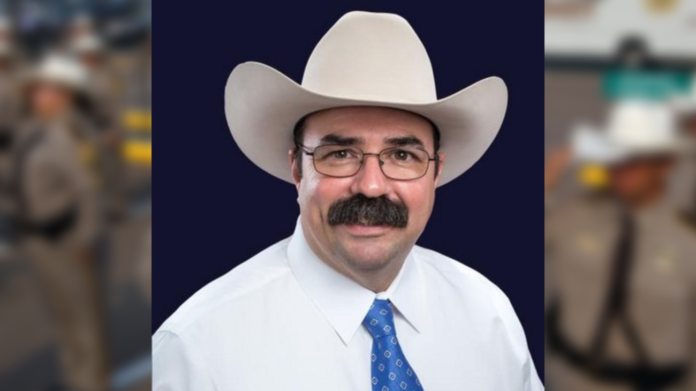
As more than 200,000 families arrived illegally in the Rio Grande Valley during 2019’s so-called surge, Hidalgo County Sheriff J.E. “Eddie” Guerra invited sheriffs with the Major County Sheriffs of America association to visit the border.
“And some of these sheriffs were highly, highly pro-wall and just thought the wall was going to fix all the problems, and they just happened to be here during the family unit surge and they saw first-hand that the wall was not stopping the family units from coming,” Guerra said.
When those officers left, Guerra said they took with them a different perspective of what the border is and what the challenges law enforcement officers here face.
“So they got off the issue on the wall and now they are more in tune to having immigration policy reform, and so a lot of that is they just don’t understand the dynamics of the border,” he said.
And Guerra, as sheriff of Texas’ most populous border county, can provide that real-life insight and experience to members of the association, all of whom serve urban communities with at least a half-million people, as those officials work to protect the historically vulnerable populations of undocumented immigrants living throughout the country.
On Wednesday, Peter J. Koutoujian, president of the association, announced he selected Guerra to lead the organization’s Border Security Committee.
“As sheriff of the most populous county in the Rio Grande Valley, Sheriff Guerra has a first-hand view of the issues facing those living, working and protecting communities along the southern border,” Koutoujian said in a news release. “He is a leading voice in Texas and beyond on border security and his experience will serve to inform the MCSA’s efforts and policy positions in this critical area.”
This association has more than 100 members that represent more than 120 million residents across 32 states and commonwealths, the news release states.
Guerra succeeds Mark Napier, vice president of the association.
Napier is the sheriff of Pima County, Arizona, and Guerra said Napier was the first actual border sheriff to serve as chair of the Border Security Committee.
Guerra will be the second.
However, with more than a 100 sheriffs in the organization, the association only has a small number of sheriffs serving populations of 500,000 or more working on or very close to the U.S. border with Mexico, including El Paso County, Pima and Maricopa counties in Arizona, and San Diego County in California.
So Guerra’s insight as chair of the Border Security Committee will benefit a large number of departments across the United States as demonstrated by that visit during the surge of families crossing illegally more than a year ago.
Guerra, who joined the association about two years ago, said he invited the group to the border after learning that people living illegally in their communities was a big issue for these sheriffs. These vulnerable populations don’t always report crimes because they don’t want to be discovered, which criminal organizations know and exploit.
Regardless of an individual’s citizenship, police officers want those crimes reported and want to arrest people suspected of committing those crimes to keep their communities safe, he said.
“I have that problem here too, but I have the, so to speak, the trust of those people who live in my community that they are able to reach out,” Guerra said.
Those kinds of interactions are one example of knowledge he can share with northern sheriffs trying to protect undocumented people in their communities who are the victims of crimes.
Then there’s the experience of working the day-to-day as an officer in a border community, which includes having to work with federal agencies tasked with arresting people suspected of entering the country illegally while balancing interagency collaboration in stopping drug trafficking and violent criminals.
The Hidalgo County Sheriff’s Office, along with local police agencies, routinely work with federal agents to investigate drug trafficking and public corruption while pooling resources when a violent suspect is on the loose.
“We have a large presence of federal law enforcement here and one of them being my biggest partner, which is United States Border Patrol, and the relationships that I have to have with my federal partners is them knowing my job and what I have to do and to not ask me to cross that line to enforce immigration law, you know, as it would hamper my ability to do my job, and they realize that,” Guerra said.
Now, after visiting the border, instead of focusing all their efforts with their representatives on building border wall, those northern sheriffs now have a better understanding of how immigration reform, technology and personnel also play into the border security.
“I can tell you that a lot of them went away with a different mindset,” Guerra said. “They went away with a different perspective of making sure that when they talk to their federal representation that the problem is immigration reform and I’m always an advocate of better technology and more boots on the ground.
“And I think we all are.”





